The Turing Locke Project
Smart Design Meets Sustainable Living at Turing Locke: A Landscape Case Study
Just two miles from the historic heart of Cambridge, in the innovative new university district of Eddington, stands Turing Locke, a striking example of how contemporary hospitality can embrace sustainable architecture and considered landscape design. Home to both the Hyatt Centric Hotel and 180 Locke apart-hotel rooms, the development is named after pioneering computer scientist Alan Turing and is thoughtfully arranged around a central courtyard garden that celebrates both community and connection.
With architecture by Stirling Prize-winning practice dRMM, interiors by acclaimed studio AvroKO, and landscape design by Robert Myers Associates, the Turing Locke project represents a successful collaboration of industry leaders across disciplines. The result is a multifunctional, urban space that seamlessly integrates accommodation, dining, co-working, and wellness facilities, while foregrounding sustainability and the user experience.
At the core of this ambition is the landscaping—delivered with precision and flair by Frosts Landscape Construction—and enhanced by Europlanters, whose custom-manufactured planters and seating installations add structure, function, and atmosphere to the site.
Sculptural Planters for a Smart Streetscape
On Turing Way, the hotel’s main frontage features four large sculptural planters, each encircled by generous timber bench seating. These monumental installations—measuring from 3x4m to 5x6m—do more than offer aesthetic appeal. Designed to intelligently separate pedestrian and cycle traffic, they play a vital role in guiding urban movement while offering restful places to pause.
Each unit was fabricated in Europlanters’ factory with millimetre precision, ensuring seamless on-site assembly. Constructed in GRP (glass-reinforced plastic) rather than metal, the planters were adapted to accommodate integrated LED lighting within their curves—something only GRP could achieve cost-effectively given the tight project timeline and budget. This decision illustrates how material choice can be key to unlocking both creative and practical solutions in landscape architecture.
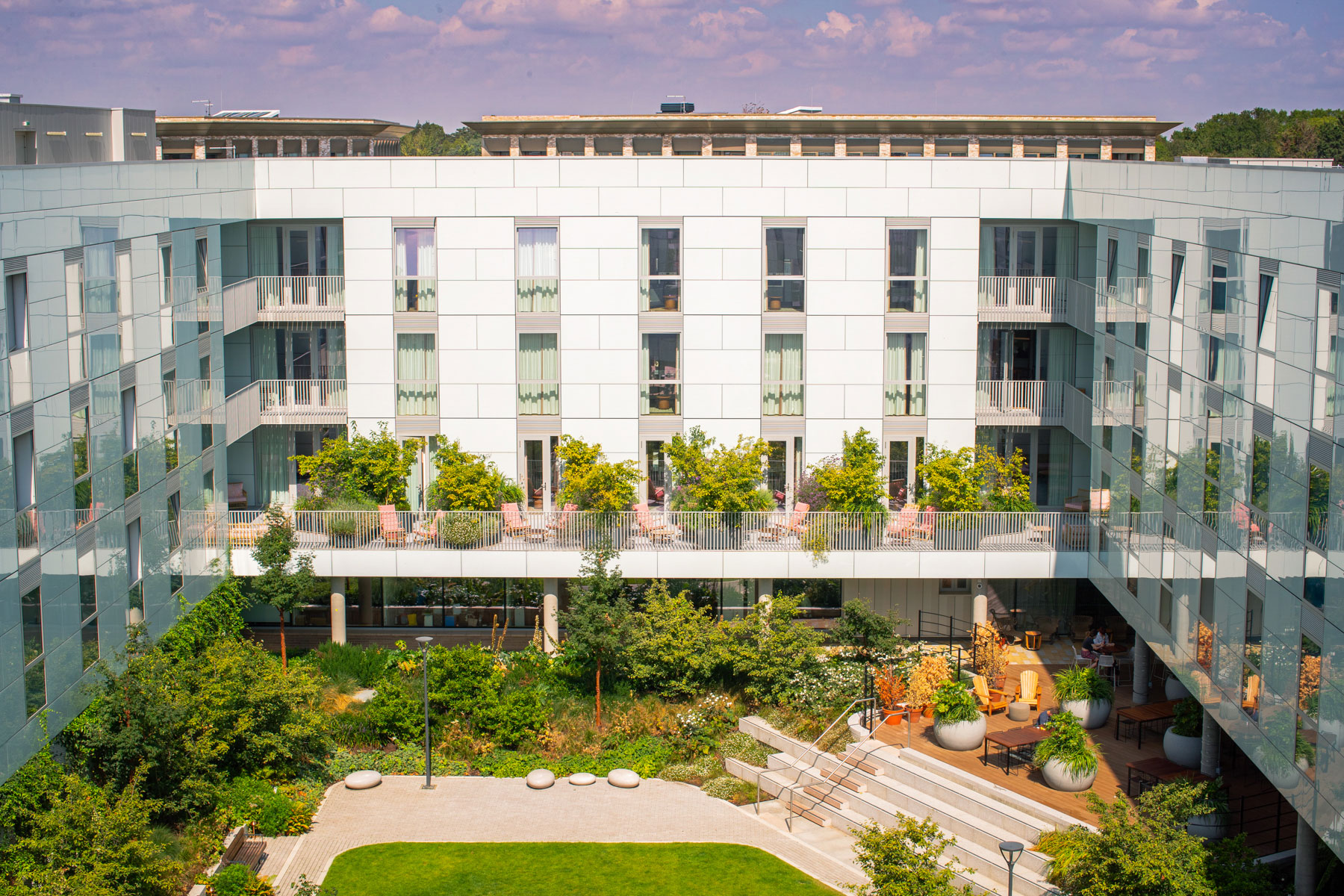
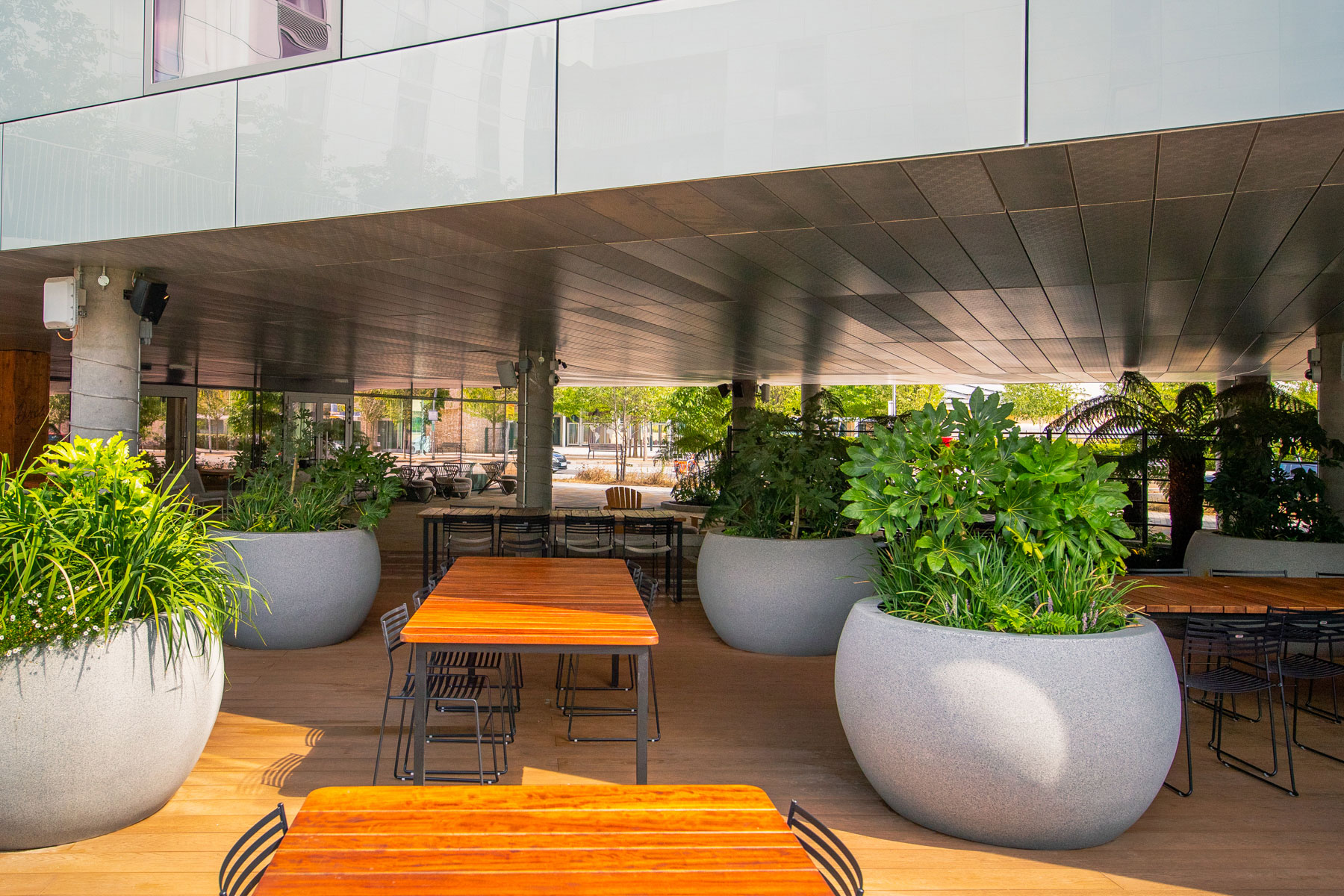
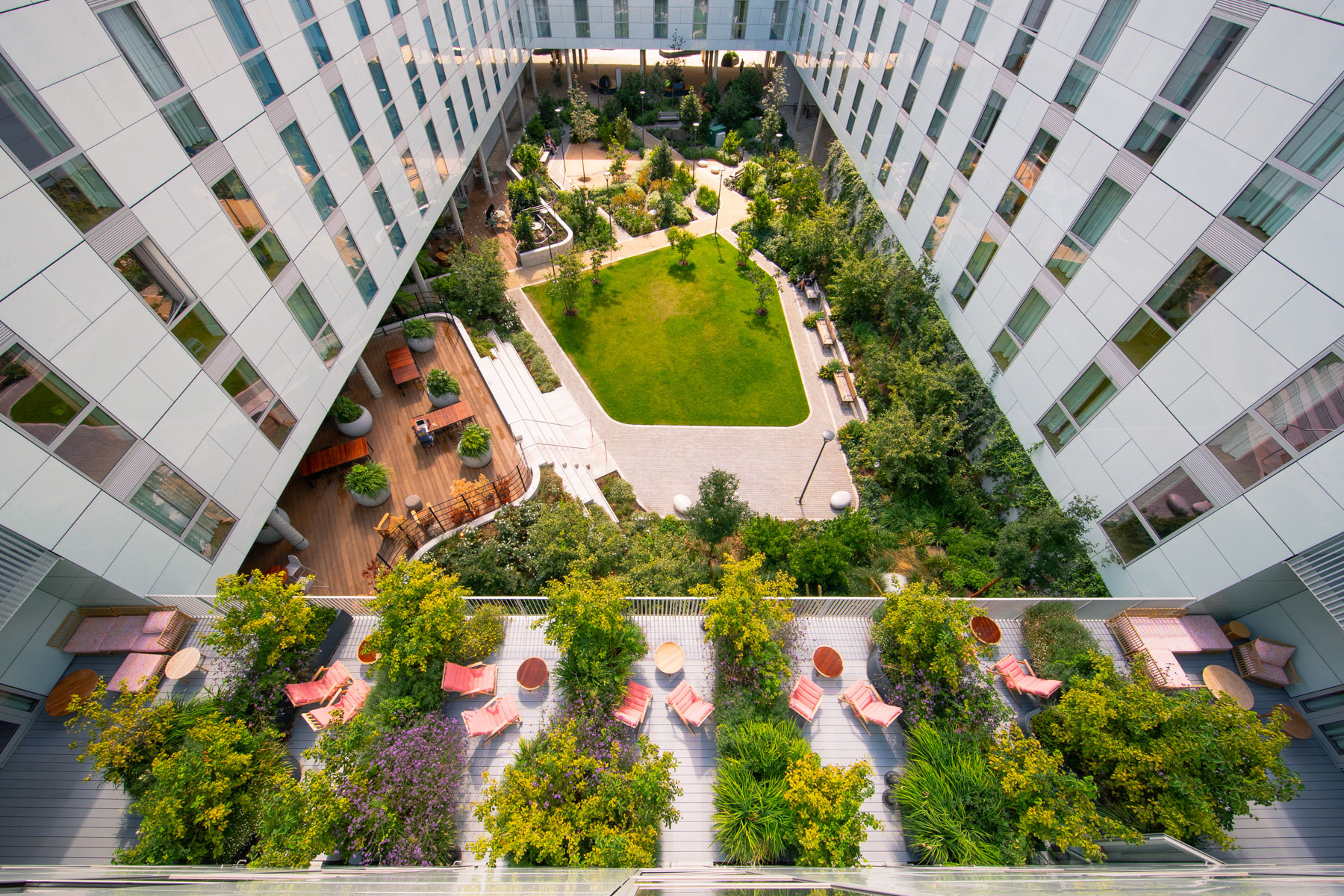
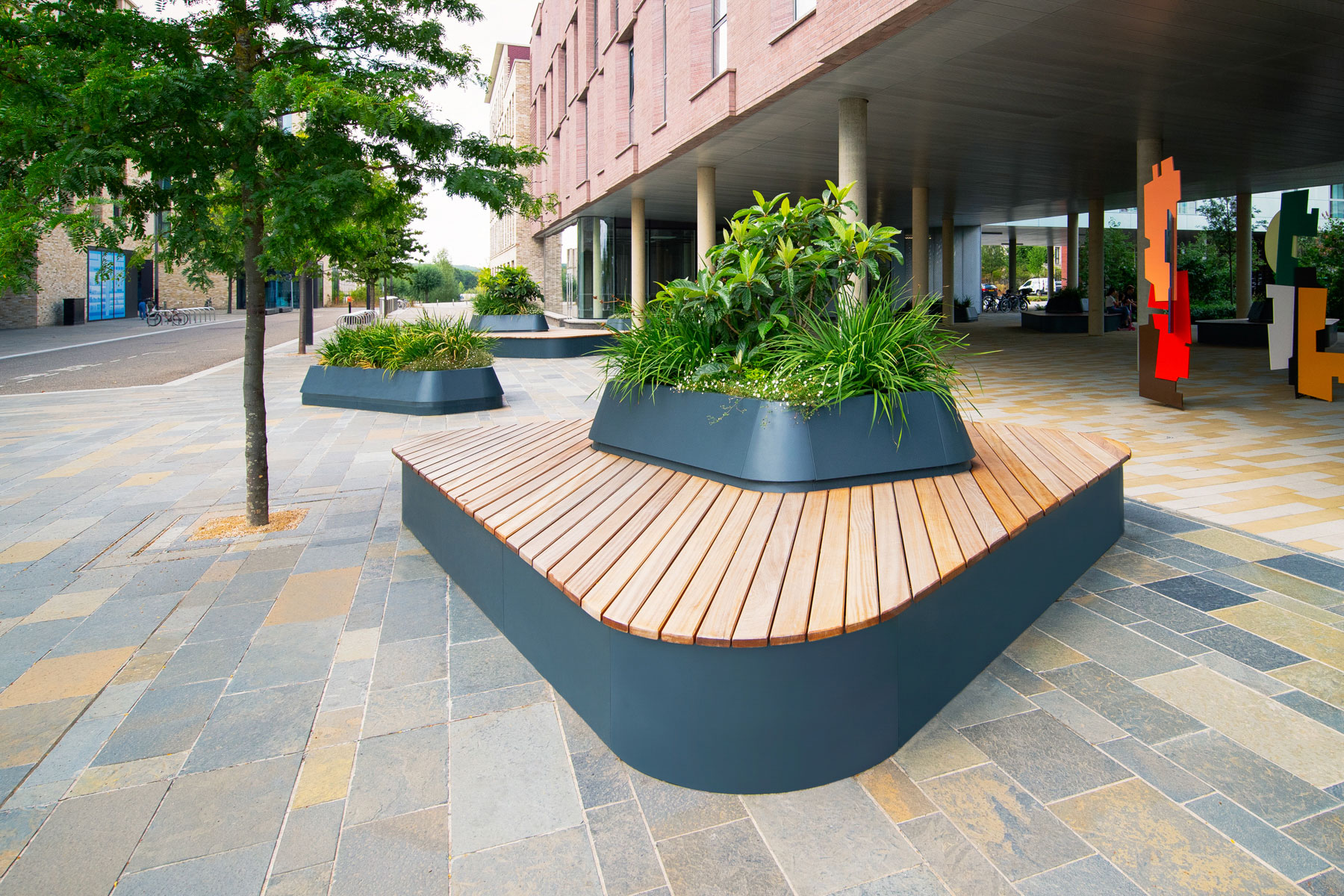
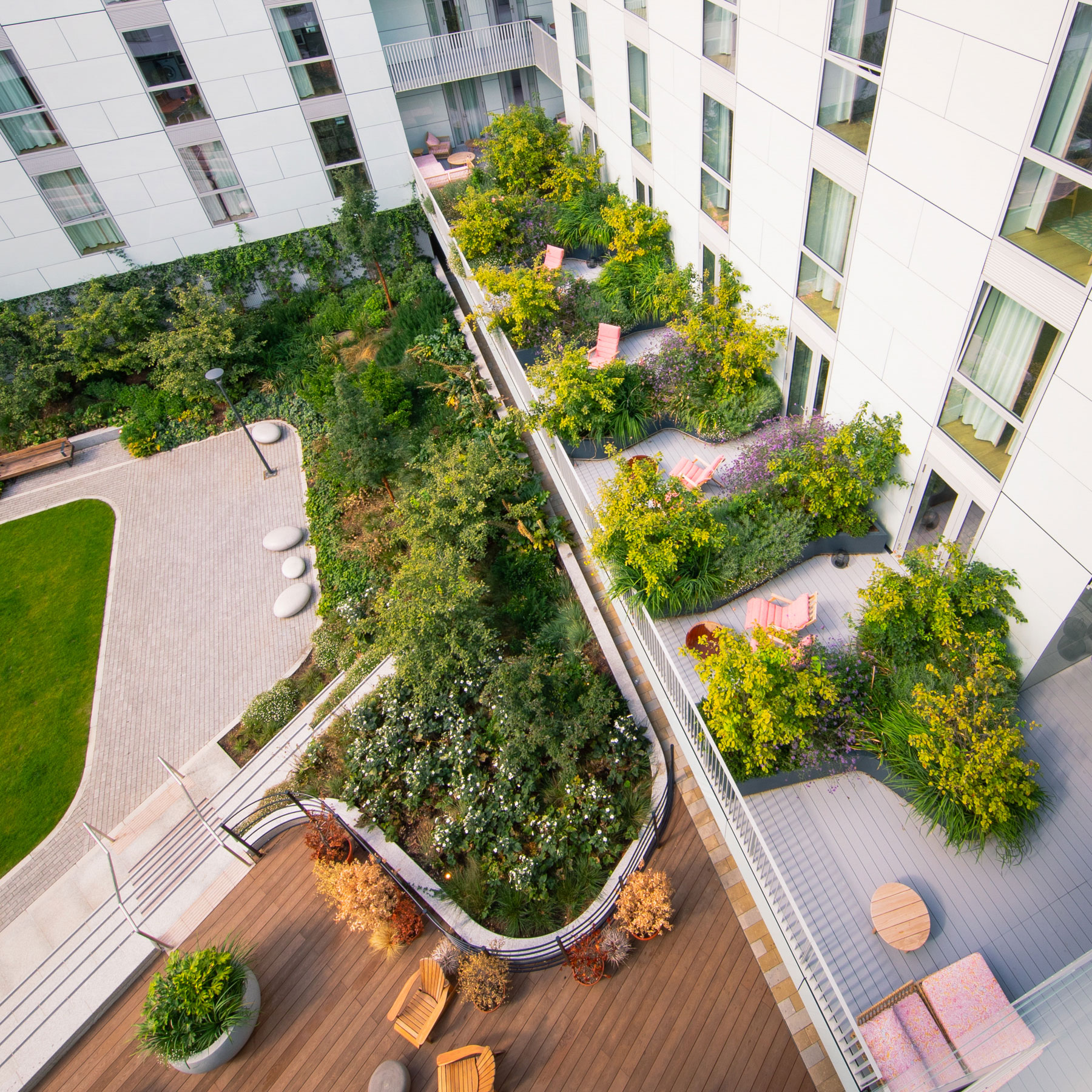
Podium Planting: Privacy with a View
On the building’s podium terraces, Europlanters supplied an elegant suite of GRP planters in organic, curved forms, designed to soften the linear geometry of the architecture and provide privacy screening between the balconies of the premium suites. These planters, filled with a mix of textural, seasonal planting, frame leafy views down to the courtyard garden and offer residents a tranquil extension of their private living spaces.
Undercroft Sanctuary
Below the hotel, in the undercroft, Europlanters’ involvement continues with a series of granite-effect Eyam planters, used to subdivide the open space into informal, flexible zones. These robust planters act as both visual and spatial organisers, creating areas for relaxation and retreat within what might otherwise be an overlooked part of the building.
Unified Design Through Detail
All planters, bench surrounds, and sculptural loungers were sprayed in RAL 7016 matt finish, harmonising with the building’s material palette. The timber used throughout—sapele—was selected for its durability and rich colour, enhancing the tactile quality of the installations and providing long-lasting outdoor comfort.
A Blueprint for Urban Green Hospitality
For architects and landscape professionals, Turing Locke provides a compelling model of how to combine hotel and residential living with responsive, sustainable landscape design. It demonstrates that outdoor spaces—when thoughtfully planned—can do far more than beautify a development. They can shape movement, define identity, improve wellbeing, and even solve complex technical challenges.
With the urban landscape under growing pressure to deliver both liveability and resilience, projects like Turing Locke show how early collaboration, flexible thinking, and the right material choices can yield spaces that are not just usable, but transformative. For Europlanters, this was more than just another project—it was a contribution to a smarter, greener, and more human-centred city.
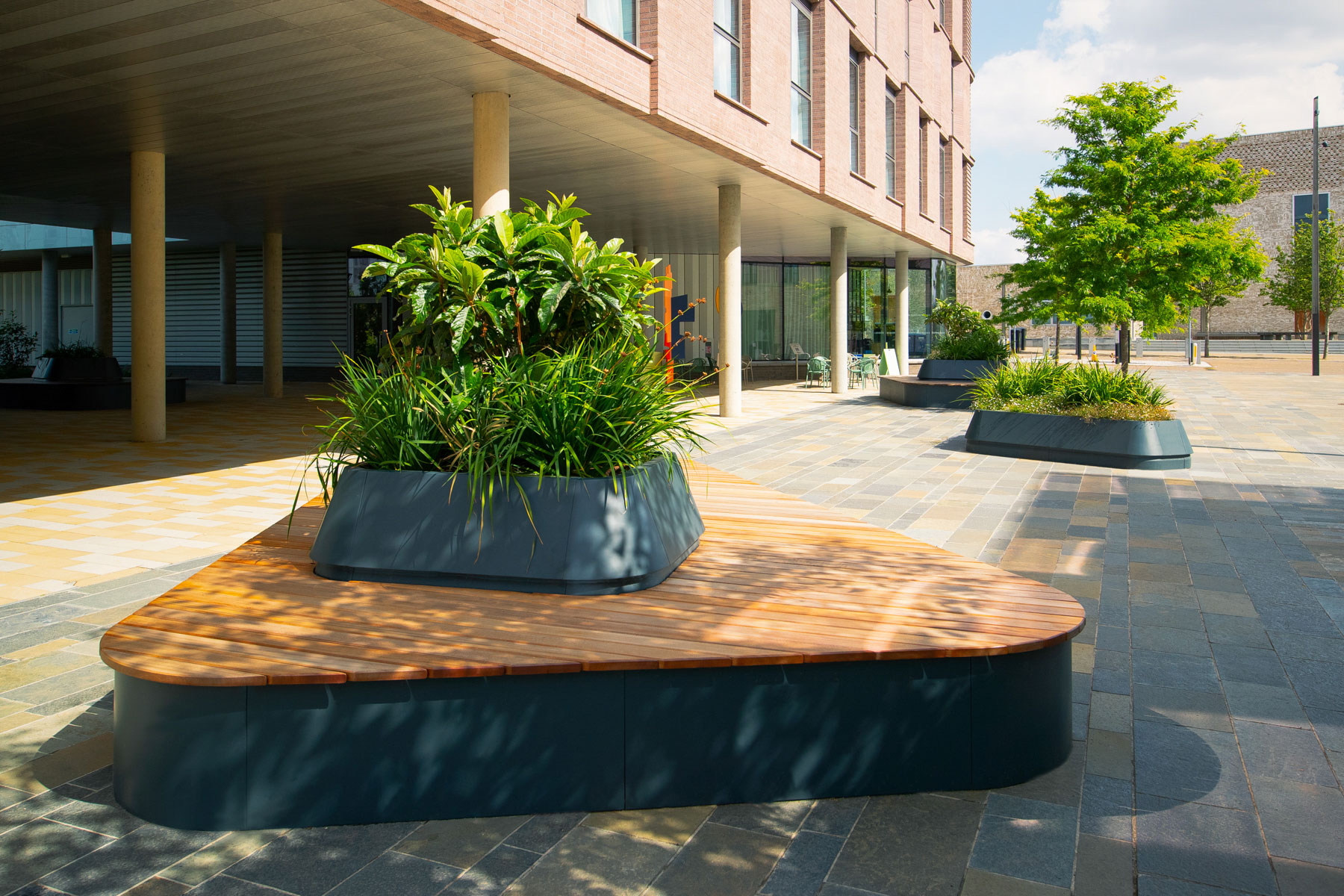
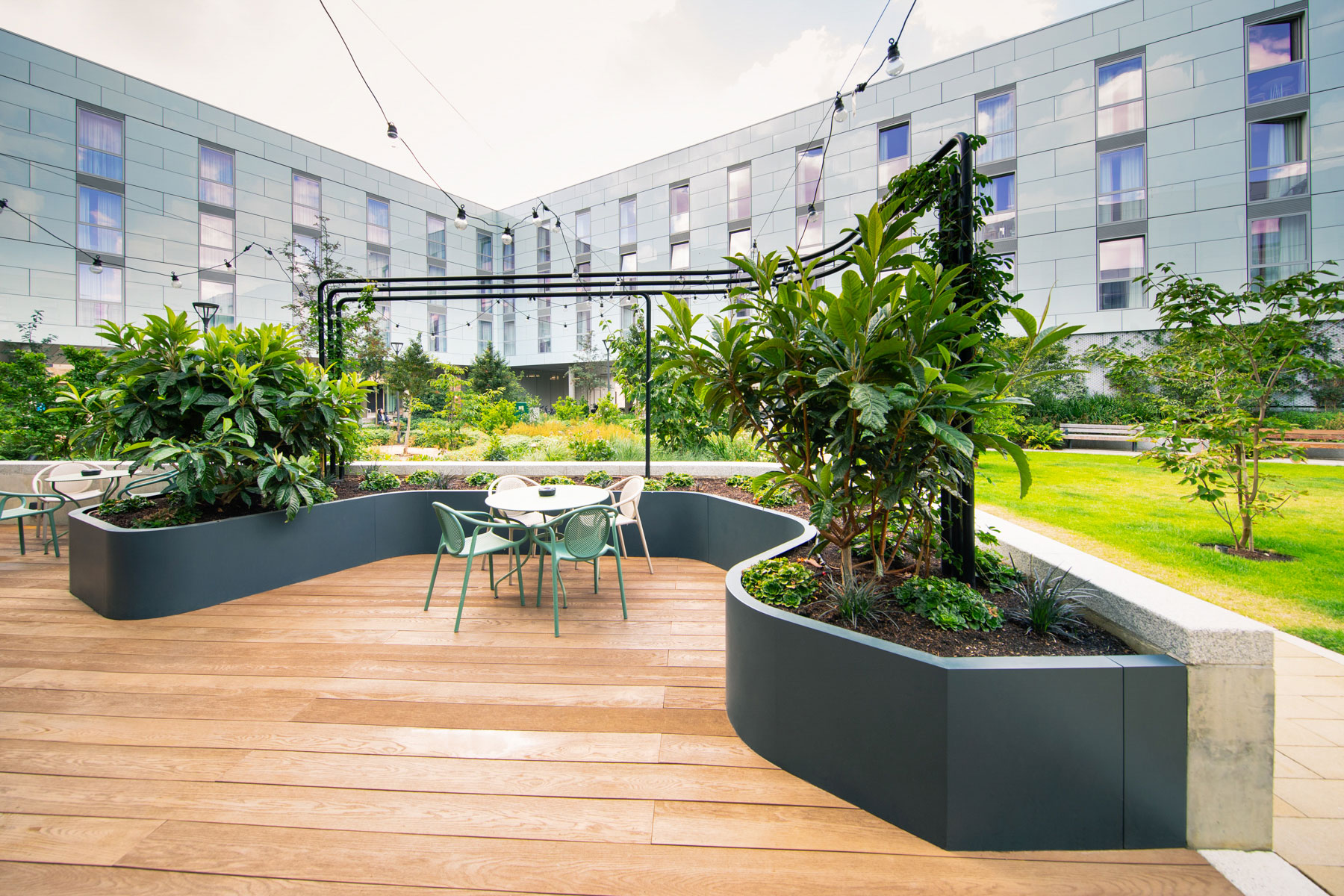
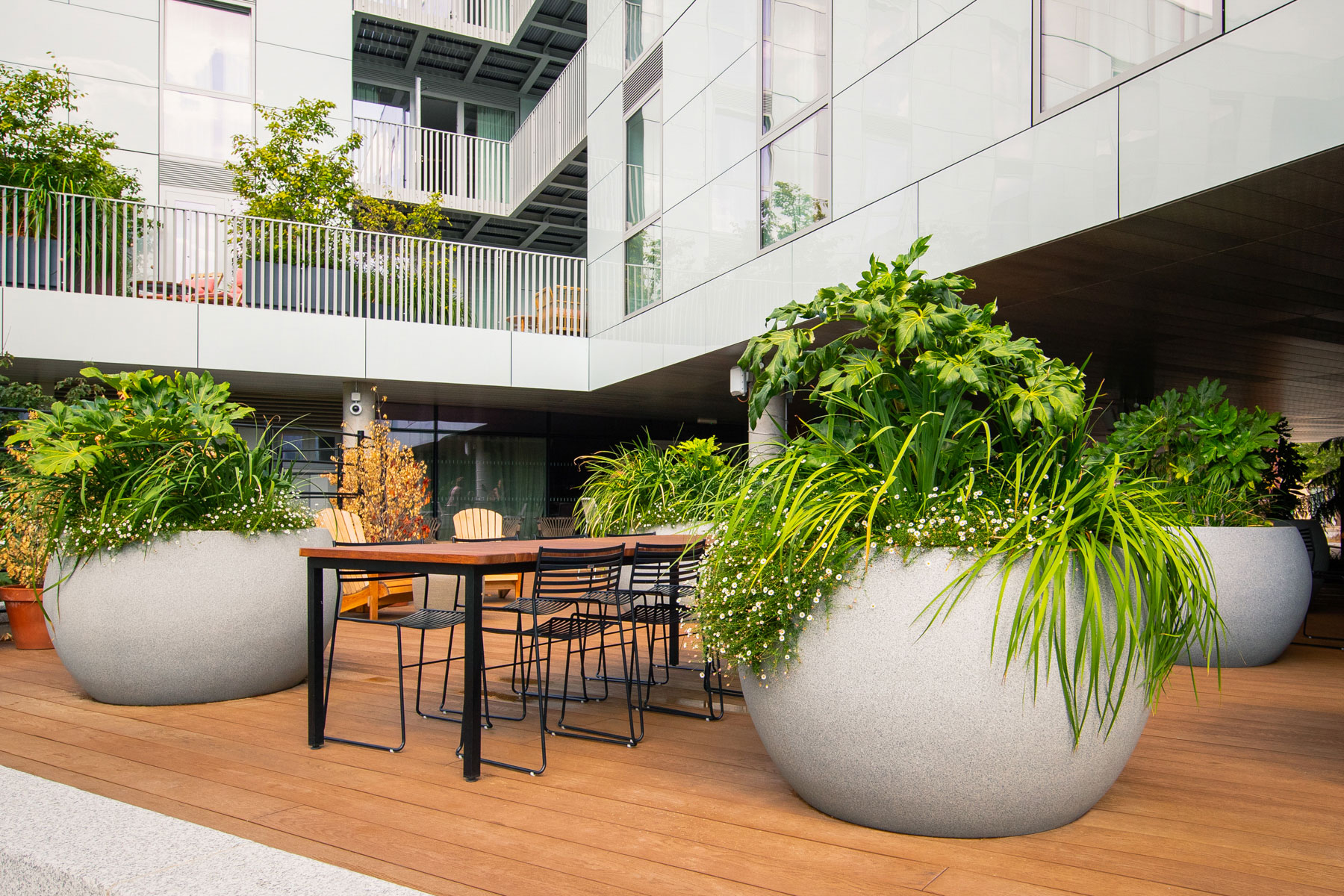
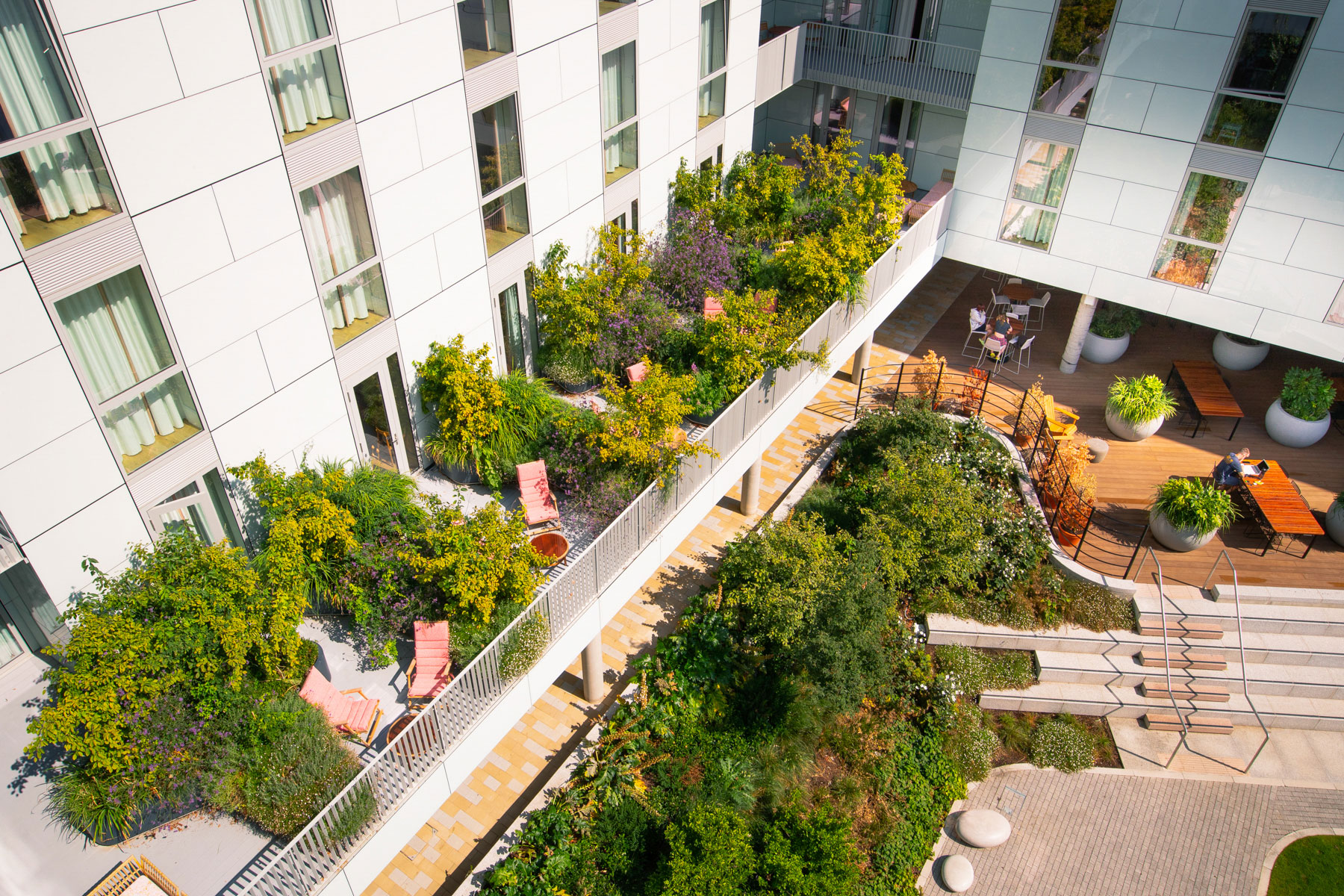
share us on…
